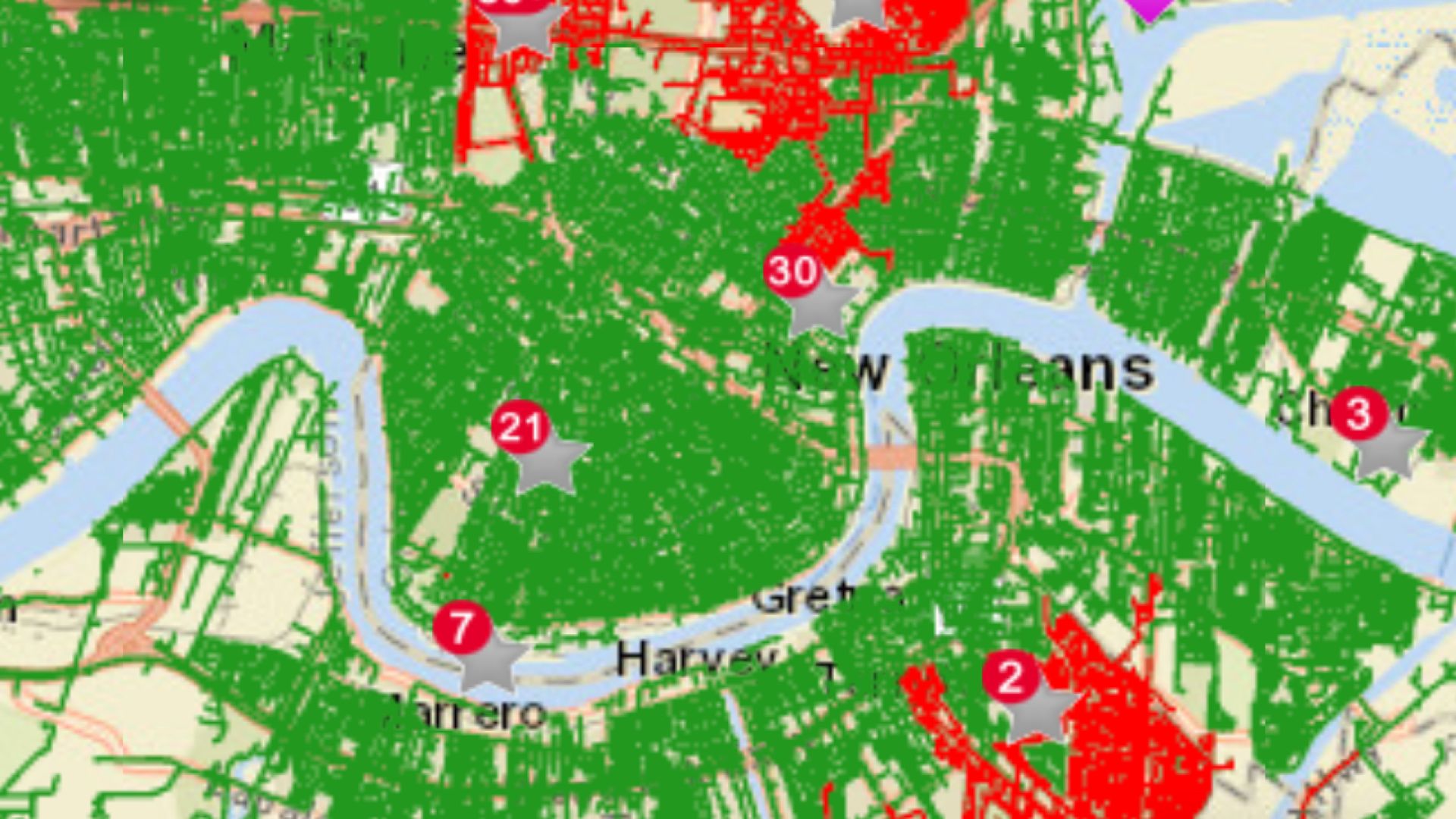Now that more than a week has lapsed since the massive May 25 load shed event in Southeast Louisiana, details have emerged regarding the scale of the generation shortfall, transmission limitations, and the amount of time leading up to the call for 600MW’s of load shed where the grid was operating under challenging conditions.
According to the Midcontinent Independent System Operator (MISO), 4,500MWs of thermal resources in Louisiana were on unplanned outage from May 21-25. Add to that, a major 500kV transmission path near Jennings, La., part of a large 500kV network that is essentially a loop around the state, was unavailable due to tornado damage in late March.
MISO struggled through these conditions with transmission switching and generation re-dispatch, sending flows through lower voltage networks from available generation to demand. However, higher than expected temperatures and persistent congestion on the system from May 23-25 were brought to a head when a transmission facility north of Lake Potchartrain reached unsafe operating conditions that were considered to be so dire that demand needed to be curtailed dramatically.
Our power grid is really such a miraculous machine that it's easy to take it for granted, but running this system requires pragmatic decision making on behalf of grid operators working in control rooms. This pragmatism can result in decisions that are unpopular with the broad public but are often necessary to avoid much bigger problems that last much longer. We should not overlook the public safety, economic value and quality of life that suffers from blackouts, but during a reliability event where your options are limited, time is not on your side as a grid operator.
What led us to this point: Generation fleet management
To be very reductive, there are two core components of a functioning grid. You have electric generation capacity, and you have the transmission capable of delivering electricity to those who want and need it. When you don’t have a transmission system that provides a host of generation options, you are forced to depend on only a few that have the same characteristics. An energy system that is homogeneous like this means that it relies on the same fuel or has a lot of moving parts required to spin a generator. But most importantly, those moving parts might break in the same way if they aren’t maintained regularly.
For thermal generators like natural gas, coal and nuclear power plants, their owners usually maintain them during spring or autumn months, or ‘shoulder months’ when demand is much lower. Renewable energy and storage technologies generally go on ‘planned outages’ for maintenance less often because they don’t have as many moving parts as thermal generation. A system that has both renewable and thermal energy resources has the benefit of options.
However, when you have planned outages for key thermal resources during a week of unseasonably warm weather like we saw in the days leading up to May 25, you have limited options if the fleet of generators you rely on may not have been maintained properly over the years during shoulder seasons. While it is hard to know precisely what the issue was throughout the 4,500MW’s of unplanned outages experienced leading up to the load shed event, the core issue is fleet management, and a lack of diversity in the generation fleet.
If more solar and energy storage were on the grid in Southeast Louisiana on May 25, it would have helped. The rolling outages happened before sunset. With renewables, there are things you can have a high degree of certainty in. Solar is available during daylight hours and storage is available when it has full reserves. But with thermal generators alone, the grid system is becoming increasingly unpredictable as these resources age and are not properly maintained.
Currently in MISO’s queue for just Louisiana, there are 8,197MW’s of solar and energy storage resources that are in the final Definitive Planning Phase, meaning the last step before entering into interconnection agreement negotiations within the next few months. Additionally, there are already 7,587MW’s of solar and energy storage resources that have interconnection agreements. They have land secured for projects and they have total costs for the project including transmission upgrades… all they’re waiting for is a buyer.
Authorities who oversee the reliability and affordability of Louisiana’s energy system should move expeditiously to facilitate the addition of these resources to make the energy system more diverse and capable of filling the shoulder season gap that is starting to emerge with unseasonably hot days.
What led us to this point: Transmission Planning
Entergy and Central Louisiana Electric Company (CLECO), the entities whose customers were subject to the load shed event on May 25, joined MISO in 2013, creating a ‘subregion’ called ‘MISO South.’ Since that time, two regional transmission planning efforts through MISO’s Long Range Transmission Planning process have identified solutions to make the grid more durable and affordable for decades into the future. These efforts build upon the Multi-Value Planning process that took place in the late 2000’s in MISO in the North.
In total, that means that the North has worked through three regional transmission plans since the late 2000’s, while MISO South has not a single regional transmission planning effort. The result is that MISO South has a limited ability to leverage multiple options across the MISO South states, which include Louisiana, Arkansas and Mississippi. The system is fragmented, reliant on mostly low voltage lines and one major 500kV system that serves demands. This system was not adequate to keep power online on May 25 and it’s likely that this is not the last time it will be challenged without regional transmission solutions.
Nearterm, there are solutions that can be beneficial. While they are smaller in scope, regulators at the Louisiana Public Service Commission should move towards granting Certification of Public Convenience and Necessity (CPCN) for Amite South Reliability Project Phases 1, 2, and especially Amite South Project Phase 3 which is near where the transmission constraint was called related to the May 25 load shed event. However, these projects alone will likely not satisfy long-term needs.
Planning and building transmission takes time, which is why regulators should support MISO’s Long Range Transmission Planning (LRTP) process in MISO South and move forward with identifying planning needs as soon as possible.
Conclusion
There will be robust discussions over the coming weeks and months about the deeper causes of the May 25 load shed event and the sequence of events leading up to the event. But what we do know is that the grid in Southeast Louisiana is not a very robust system, and that, in many ways, an event like this was inevitable.
However, there are solutions in transmission planning, fleet management, and incorporating more diverse generation types into the generation fleet that serves the people of Louisiana and neighboring states. Building solar and storage generation that is shovel-ready as well as near-term transmission fixes, in addition to planning the transmission grid for the future is key to not only success, but a safer Louisiana, and a better quality of life for the people who live there.
Louisiana needs to invest in more transmission, renewable energy, and energy efficiency to prevent future power outages. Regulators need to hold Entergy accountable and ensure investments are future-proofing the state against.
The New Orleans City Council is accepting public comments regarding the outages, and comments can be submitted at the following link: https://shorturl.at/hORMW





